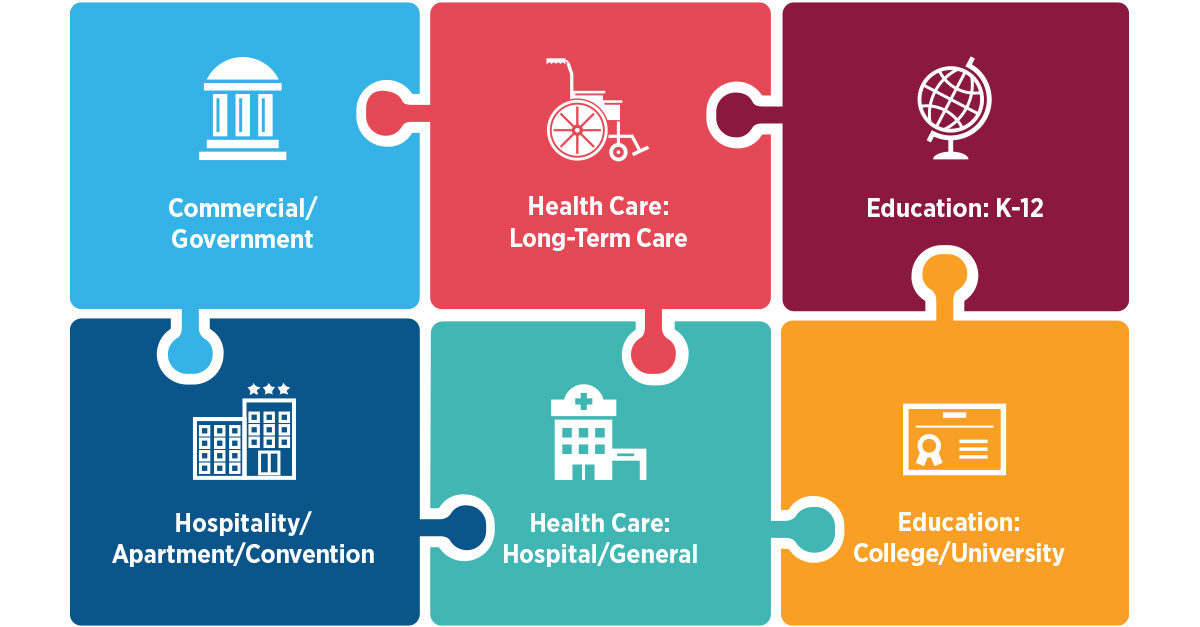Exactly How Facility Management Enhances Office Performance
Exactly How Facility Management Enhances Office Performance
Blog Article
Maximize Efficiency and Safety: Ideal Practices in Facility Monitoring
In today's swiftly advancing landscape, optimizing efficiency and safety in facility monitoring has come to be an important emphasis for organizations striving to enhance functional performance. By integrating smart modern technology, prioritizing upkeep procedures, and fostering a society of safety, center managers can substantially improve both performance and compliance.
Embrace Smart Technology
In today's rapidly developing landscape of center management, the combination of wise technology has become a crucial element of functional performance and sustainability. Taking on sophisticated technologies such as the Internet of Things (IoT), expert system (AI), and information analytics can substantially boost center monitoring methods. These modern technologies facilitate real-time surveillance and control of building systems, enabling managers to enhance power usage, lower functional prices, and boost general safety and security.
Carrying out clever sensing units and automation systems enables precise tracking of ecological problems, tenancy degrees, and equipment efficiency. This data-driven approach not only educates decision-making yet also supports predictive maintenance, minimizing downtime and expanding asset life. Furthermore, wise modern technology enhances individual experience by developing adaptive atmospheres that reply to the requirements of passengers.
Incorporating clever systems likewise promotes sustainability initiatives, such as energy-efficient illumination and heating and cooling systems, adding to lowered carbon impacts. By welcoming these technologies, center managers can make certain that their procedures remain affordable, durable, and straightened with modern sustainability goals. Ultimately, the shift towards clever innovation stands for a transformative action in redefining center management for a much more sustainable and effective future.
Prioritize Normal Upkeep

Establishing a regular maintenance schedule is necessary. This ought to include routine evaluations, servicing, and necessary repair work for all equipment, a/c systems, plumbing, and electrical systems. Using a digital maintenance management system (CMMS) can improve this procedure, providing monitoring and notifies for upcoming maintenance jobs.
Moreover, promoting a culture of liability amongst team enhances the efficiency of maintenance initiatives. Educating workers to identify and report maintenance concerns can lead to proactive administration instead of reactive feedbacks. Additionally, recording maintenance activities makes sure conformity with safety laws and gives valuable insights for future preparation.
Implement Security Training Programs
An extensive safety training program is crucial for fostering a safe and secure working setting in any kind of center - Facility Management. Such programs gear up workers with the knowledge and skills essential to recognize hazards, carry out security methods, and respond effectively in emergencies. By prioritizing safety and security training, organizations can substantially minimize the danger of injuries and mishaps, therefore improving overall performance
To execute a reliable safety and security training program, it is vital to tailor the content to the particular demands of the center and its operations. This includes performing a thorough threat analysis to determine prospective dangers one-of-a-kind to the workplace. Training straight from the source needs to include a variety of topics such as appropriate equipment use, emergency situation discharge procedures, and emergency treatment techniques.
Furthermore, it is essential to involve staff members actively during training sessions. Using hands-on presentations and real-life situations can boost understanding and retention of safety and security practices. Routine correspondence course ought to also be scheduled to maintain safety and security awareness at the forefront.
Optimize Space Utilization
Reliable space utilization is an important element of facility management that directly impacts operational efficiency and cost-effectiveness. Organizations usually have problem with underutilized or jammed areas, leading to ineffectiveness and increased expenditures. To optimize room use, facility supervisors should carry out normal analyses to recognize just how areas are currently being used and where enhancements can be made.
Implementing flexible work area styles, such as open workplace designs or modular furniture, can considerably improve flexibility to transforming needs. Furthermore, leveraging modern technology, such as space monitoring software program, can offer important insights right into tenancy patterns and aid recognize underused locations.
An additional finest technique is to establish clear zoning within the facility, making certain that various functions are rationally set up to minimize disturbance and take full advantage of productivity. Motivating a society of partnership can lead to much better space-sharing methods among groups, thereby enhancing general performance.
Establish Clear Communication Channels
Enhancing room usage frequently discloses the demand for durable interaction methods within a facility. Clear communication networks are important for facilitating efficient collaboration amongst personnel, maintenance groups, and monitoring. By establishing these networks, center managers can make sure that information streams seamlessly pertaining to area use, operational modifications, and safety protocols.
Applying a multi-faceted interaction method-- combining digital platforms, find out here now such as e-mails and team partnership tools, with face-to-face communications-- can significantly boost interaction and information circulation. Routine conferences ought to be arranged to go over recurring tasks, address worries, and share updates. In addition, developing a centralized information hub, such as an intranet, permits staff members to accessibility crucial records and statements easily.
Furthermore, feedback systems are important to gauge the performance of communication approaches. Urging personnel to share their insights can cause improvements and cultivate a culture of openness. Training programs concentrated on interaction abilities can additionally empower employees to convey information plainly and successfully.
Ultimately, establishing clear communication channels not only takes full advantage of performance however likewise boosts safety by making sure that everyone is notified and aligned with the facility's operational objectives. (Facility Management)

Conclusion
In verdict, the integration of wise innovation, regular upkeep, extensive safety and security training, optimized space utilization, and reliable communication networks collectively boosts effectiveness and safety and security in facility administration. By leveraging IoT and AI for real-time surveillance, companies can minimize operational expenses while making certain conformity with safety regulations. An aggressive strategy to maintenance and training cultivates a safer office setting, inevitably resulting in enhanced performance and business success. These finest practices work as important parts for effective center administration.
In today's rapidly evolving landscape, optimizing performance and safety and security in facility monitoring has actually become a crucial focus for organizations striving to improve functional performance. By integrating clever innovation, prioritizing upkeep advice protocols, and promoting a culture of safety, facility supervisors can significantly improve both efficiency and conformity.To implement a reliable security training program, it is critical to tailor the material to the particular requirements of the facility and its operations. By establishing these networks, center supervisors can guarantee that details moves perfectly pertaining to space usage, functional changes, and security procedures.

Report this page